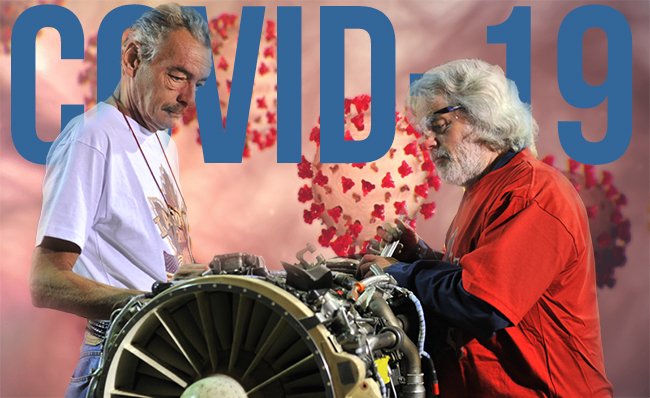During the Pandemic
While the air transportation industry has usually been resilient in the wake of major disruptions and crises, it is questionable that air transportation will be able to recovery as quickly as it has in the past. Airlines are running out of liquidity making bankruptcies, consolidations and even nationalization a possibility. All of this this will inevitably affect civil aircraft manufacturing, supply chains and aftermarket support businesses.
The defense side of aerospace will fare better as contracts have been secured and restrictions will not have the same impact.
On the commercial side, weakening links in supply chains, as well as, bottlenecks nationally and internationally are expected.
Aerospace companies are expected to experience cash flow issues in May and June as new production schedules become established. At the same time, companies will review their strategy, industrial footprint and operating models. Staff reductions are likely, and efficiency will be examined. Business outlooks predict that automation and 3D printing in wide-scale manufacturing could become the new standard. Companies are being encouraged by experts to cut discretionary and capital spending, and ask for extensions of lines of credit, look for reductions in infrastructure costs, lowering of taxes, and support in supply chains. Additionally, due to the loss of market share, some suppliers and specialized providers may experience financial strain.
Because it’s difficult to determine how long travel restrictions will last, and if there will be a second wave of the virus, the aerospace industry is taking three scenarios into consideration;
- If restrictions last 2 months, travel levels would theoretically be back to 100% by the end of 2020 and early 2021. Replacement aircraft would be postponed by 12 months. Cumulative demand for new aircraft would be reduced by 800 planes over a ten year period.
- If restrictions last 4 months, travel levels are expected to return to 90% of pre-crisis levels by the beginning of summer 2021. Replacement aircraft would be postponed by 18 months. Demand for new aircraft would drop by 15,840 new aircraft over a ten year period, requiring downsizing of industry, and refinement of replacement strategies and product mix in fleets. For instance, A220s would be chosen in favour of A320.
- If restrictions last 6 months, travel is expected to return to 80% of pre-crisis levels by the Summer of 2022. Replacement aircraft would be postponed by 24 months. In this scenario, demand for new aircraft would drop by 50% over the next ten years, which would result in austere measures to downsize and restructure. However, what will mitigate some of the effects of the pandemic are existing orders and contractual obligations of companies.
Since MRO is driven by the size and flight activity of global fleets, it is the first area to experience shockwaves due to the pandemic. Once aircraft are grounded, the demand for all flight cycle linked maintenance diminishes. MRO providers and spare parts suppliers would be affected as MRO shops would first use existing inventory before purchasing new parts from suppliers.
If oil prices remain low, airlines can afford to fly older, less fuel-efficient planes, which will also impact aircraft manufacturing and assembly.
Three challenges are anticipated irrespective of the scenario and length of travel restrictions.
- Postponement or cancellations of aircraft orders
- Bridging the time until new aircraft returns
- Minimizing the amount of time to adjust supply chains
Post Pandemic:
Downsizing of operations for OEMs and suppliers is likely as they adjust to new realities, such as the loss of scale. Firms will also have to make adjustments in efficiency, which can take the form of automation. Automation is also an option to reduce human to human contact and could be seen as a health and safety measure under the new circumstances. It’s also possible that weaker suppliers may drop out of the market, and that there will be some consolidation of the industry.
OEMs may have a greater presence and concentration in the industry or there might be a more balanced industry model between OEMs and Tier 1 suppliers.
Government intervention may be required as companies transition to a new operational environment.



